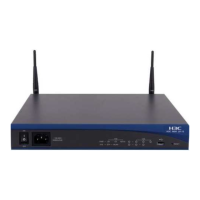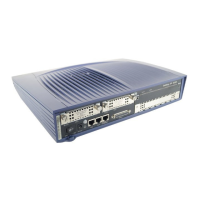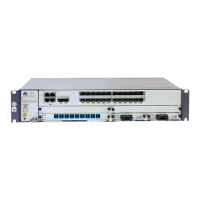Command Manual - Routing Protocol
Quidway S6500 Series Ethernet Switches Chapter 3 OSPF Configuration Commands
Huawei Technologies Proprietary
3-49
Parameter
process-id: Process ID of OSPF. The command is applied to all current OSPF
processes if you do not specify a process ID.
ifstatechange, virifstatechange, nbrstatechange, virnbrstatechange, ifcfgerror,
virifcfgerror, ifauthfail, virifauthfail, ifrxbadpkt, virifrxbadpkt, txretransmit,
viriftxretransmit, originatelsa, maxagelsa, lsdboverflow, lsdbapproachoverflow:
Types of TRAP packets that the switch produces in case of OSPF anomalies.
Description
Using the snmp-agent trap enable ospf command, you can enable the OSPF TRAP
function. Using the undo snmp-agent trap enable ospf command, you can disable
the OSPF TRAP function.
This command cannot be applied to the OSPF processes that are started after the
command is executed.
By default, the switch does not send TRAP packets in case of OSPF anomalies.
For detailed configuration of SNMP TRAP, refer to the module “System Management"
in this manual.
Example
# Enable the TRAP function for OSPF process 100.
[Quidway] snmp-agent trap enable ospf 100
3.1.50 spf-schedule-interval
Syntax
spf-schedule-interval interval
undo spf-schedule-interval
View
OSPF view
Parameter
interval: SPF calculation interval of OSPF, which is in second in the range of 1 to 10.
The default value is 5 seconds.
Description
Using spf-schedule-interval command, you can configure the route calculation
interval of OSPF. Using undo spf-schedule-interval command, you can restore the
default setting.

